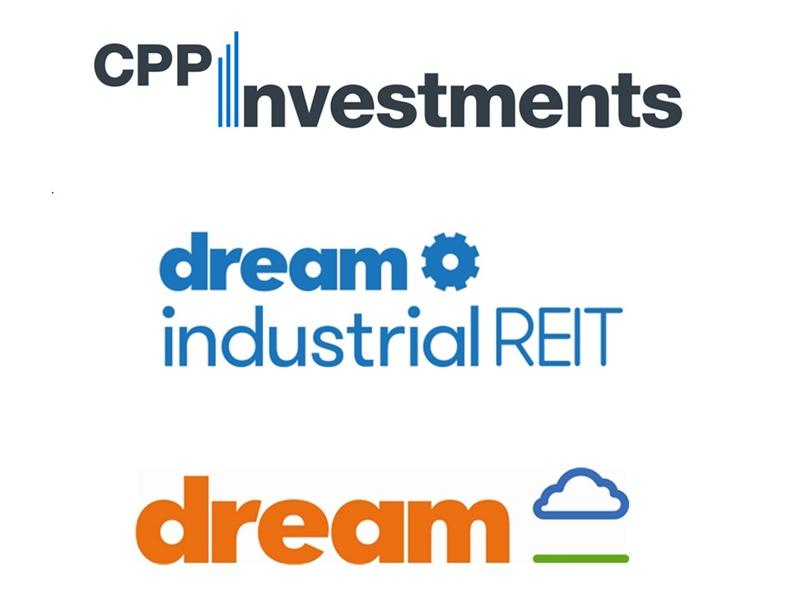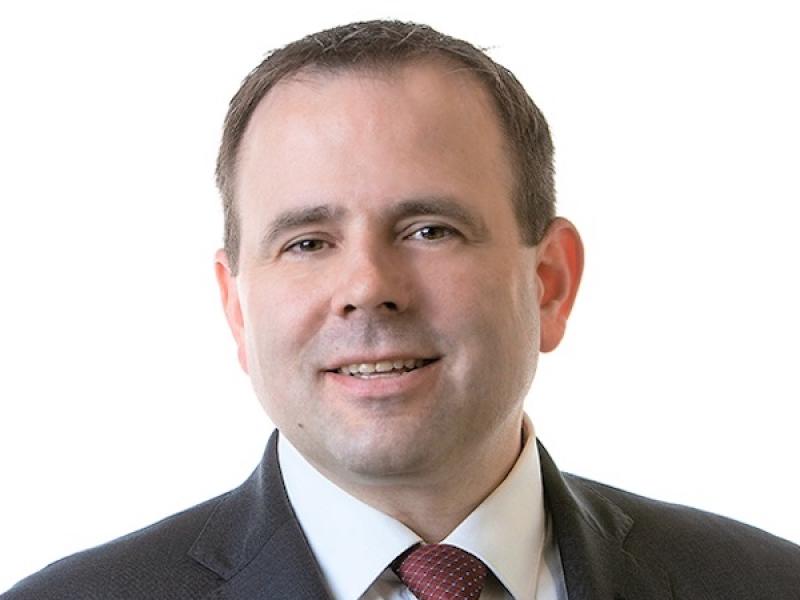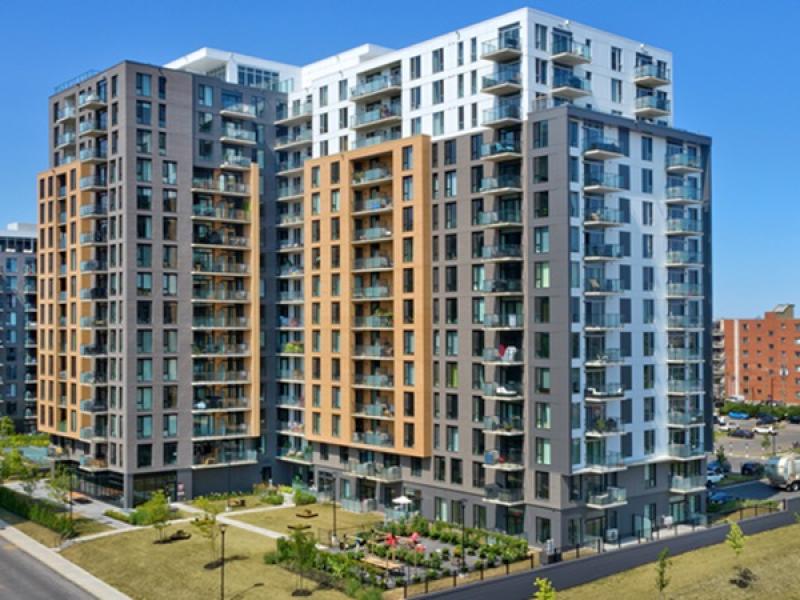
Andie Daggett, manager of rental market data (Alberta and Ontario) for research firm Urban Analytics. (Courtesy Urban Analytics)
Developers are building or planning 94 projects in Calgary, and another 84 developments in Edmonton, participants in a multiresidential panel at the Alberta Real Estate Forum heard this week. However, even as the ongoing economic downturn makes rental apartments more attractive, it could be a while before some of those projects come to fruition.
The 94 projects being built or in pre-development in Calgary’s purpose-built residential rental market comprise 23,712 units. Currently, 22 projects are under construction representing 5,282 units.
The remainder have submitted development permits to the City of Calgary and are in various stages of that process.
Through the end of Q3 2020, there have been 16 project launches in the city bringing 1,950 new units onto the market.
“Albertans have been increasingly active in the purpose-built rental market over the past few years as it has offered them a flexible and convenient way of living,” Andie Daggett, manager of rental market data (Alberta and Ontario) for research firm Urban Analytics, said during the discussion.
Rental apartments offer flexibility
“Signing onto a one-year lease allows individuals to remain flexible with their lifestyle and removes the pressure and financial obligation of a mortgage.
“Newer purpose-built rental buildings have also offered individuals unique amenities such as fitness facilities, social lounges and games rooms to create a convenient way of living.
“At this time, many potential purchasers are holding off on buying due to economic and financial uncertainty and are instead opting to commit to a lease as opposed to a mortgage, which is helping drive demand in the rental market.”
Daggett said 14 new projects launched in Edmonton through Q3 2020, comprising 1,701 units. The 84 projects with development permit requests submitted would deliver 19,915 units in the provincial capital.
Currently under construction are 24 projects with a total of 4,312 total units.
“Everything that’s under construction will be launching any time between the next year to three years from now,” Daggett noted.
The volume of projects in the permit stage might seem “daunting” she said, but the focus should be on what is currently under construction, as some of those developments might be significantly delayed, or not built at all.
Calgary, Edmonton markets a challenge
It’s a sentiment echoed by James Ha, vice-president of finance and investor relations at Boardwalk REIT (BEI-UN-T). When asked what would keep him up at night, Ha said oversupply is his chief concern.
“Sadly, that’s what creates a downdraft in rental rates and that’s what creates the operational challenges or the innovation that’s required,” he said.
Ha characterized the current market as challenged, with its vacancy rate at about five per cent.
“With rental rates where they are today, it certainly makes things challenging to make many of these developments work,” he explained.
“With rental rates where they are here in Calgary and Edmonton, with the completion of our project Brio here in Calgary (a new purpose-built rental tower), I think we’ll likely press pause here in Calgary and Edmonton from a development standpoint for a little bit.”
No matter the future timeline, today’s rental apartment trend being seen in Calgary and Edmonton is part of a wider, nationwide shift in demand.
Nationwide demand for apartments
A CBRE survey of more than 80 Canadian multifamily owners/operators, representing more than 200,000 units nationwide, reported major increases in tenant demand for unit features that support work-from-home and social distancing, including in-suite laundry, dens or home offices, balconies and walk-up access.
CBRE said the survey revealed the residential sector has weathered the storm of the COVID-19 pandemic well so far. Fundamentals for multifamily assets in particular have remained strong, with the investment market poised to make a full recovery in much of the country.
There were a number of key findings in the report:
* 47 per cent of landlords report overall apartment vacancy rates have not been impacted by COVID-19, though Alberta is the outlier. Already challenged by an ailing energy sector, 43 per cent of landlords surveyed said COVID led to a three to five per cent increase in vacancy rates within their portfolios this year;
* Rent collection has not been significantly impacted by the pandemic. Over the first four months of the crisis, landlords indicated rent collections within their portfolios averaged 96 per cent, with no discernible downward trend;
* There has been a significant shift in tenant turnover patterns. Amid financial security concerns, most residents have delayed moves until there’s greater clarity regarding a COVID recovery, with 35 per cent of landlord respondents reporting decreased turnover rates;
* Landlords are seeing increased demand for pandemic-friendly features such as: in-suite laundry to avoid laundromats and shared laundry rooms; balconies (for outdoor time); walk-up access (to avoid elevators); and dens or small home offices, to facilitate remote work.
In the latest Emerging Trends in Real Estate report by PwC and the Urban Land Institute, multifamily residential was listed as one of its expected best bets for real estate in 2021.
“Although some pandemic impacts — notably, reduced immigration, the desire for more space, and unemployment — may put a damper on demand for very dense housing types, interviewees emphasized that shelter remains a core need and noted the stability that the multifamily category can offer right now,” said the report.
“But demand may shift, with renters and home buyers looking to live in townhouses and mid-rise buildings rather than larger towers that have been the trend in urban centres in recent years.
“Interviewees also emphasized that the best prospects are for more affordable multifamily housing options, especially in light of uncertainty about jobs and the economy.”
New product will mean higher vacancy
During the forum, Daggett said vacancy rates in Calgary will rise if new developments continue to come to the market.
“I don’t really look at vacancy in much of a negative way because it is really hard to put it that way when we are having all these product launches, and from what we see with the fully leased product there isn’t too much vacancy there,” she said, while adding a proviso.
“I would say rents and developers having to consistently offer those rental rate incentives; we’re pretty used to it here in Alberta.”
“Now that we’ve started offering them and we have been offering them for a few years, it’s going to take a while before we can completely not offer them at all . . . I hope that developers are really (planning) out their buildings knowing that you’re probably going to have to offer one or two months free and you’re probably not going to get over that $3 a square foot that you were hoping for.
“If you have that kept in mind, you’re probably pretty safe, but I think it’s just something I think is going to remain in our market for the next few years to come.”











